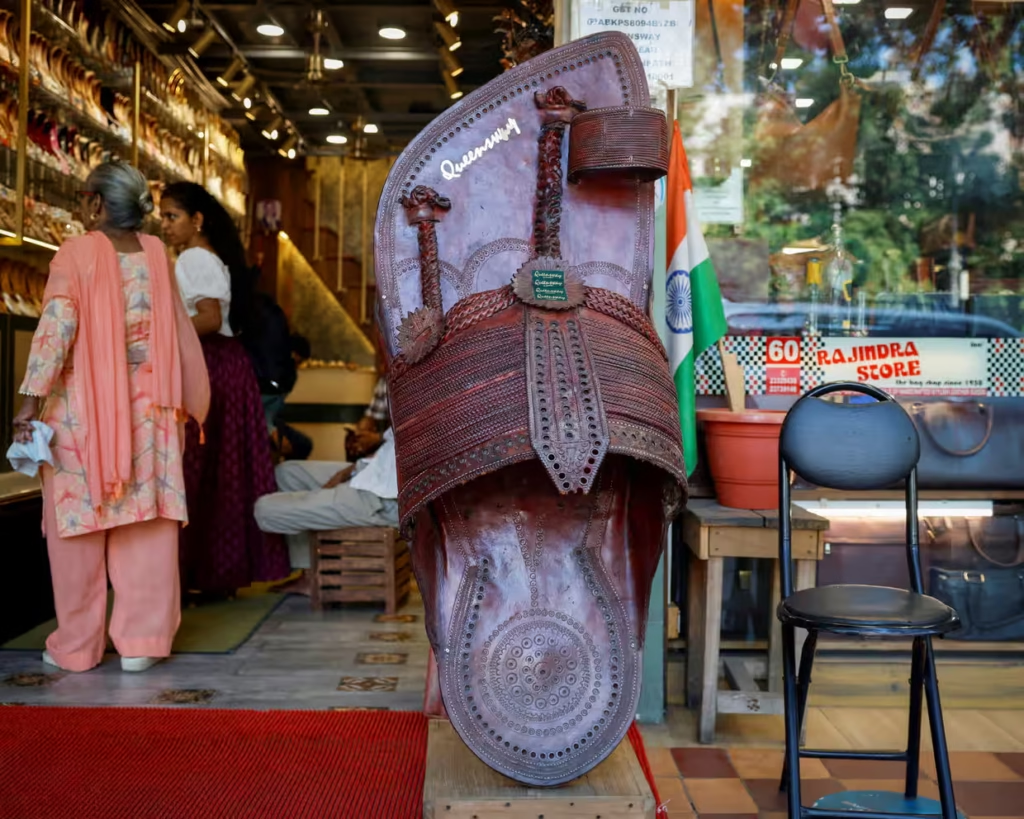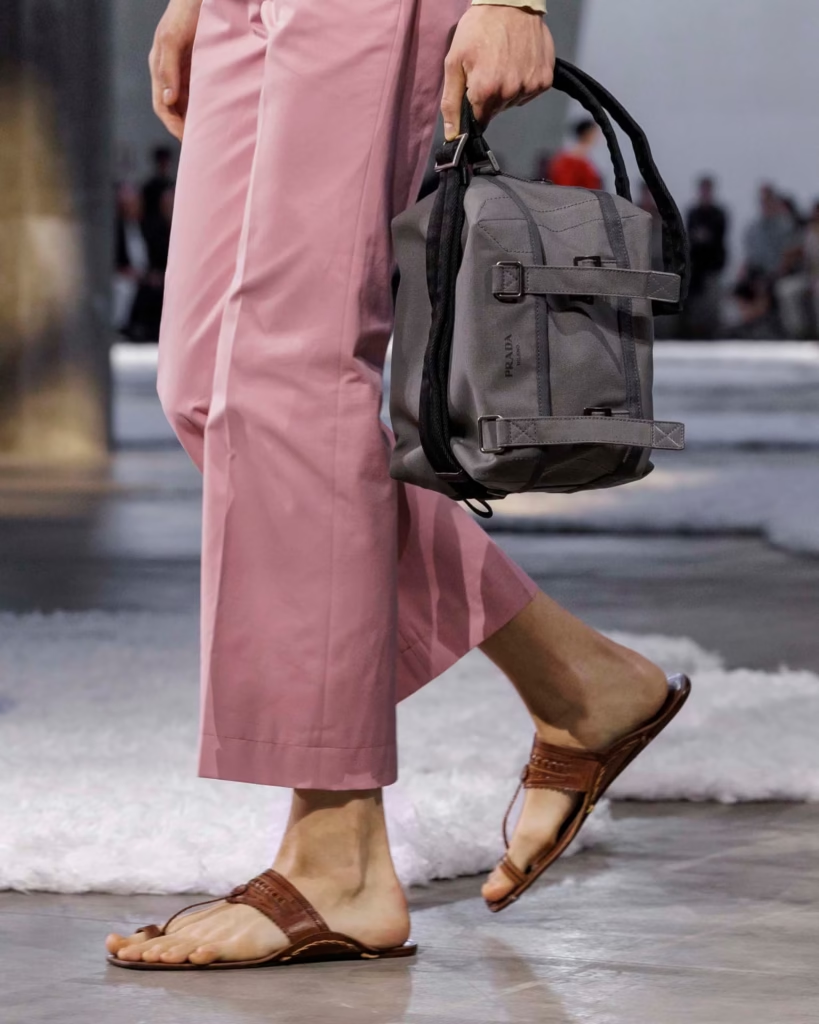The fiasco is a reminder to always give credit where credit is due.
Fashion has a new “Oh no, you didn’t” moment. This time it involves Italian luxury label Prada, which has been accused of cultural appropriation after failing to acknowledge that its new leather sandal design was inspired by traditional Indian footwear.
Called Kolhapuri sandals, these are handcrafted, often naturally dyed, and are known for their distinct toe-loop design. A quick search online shows that, true enough, the Prada sandals—which were showcased at Milan Fashion Week barely a week ago—look a lot like their Kolhapuri cousins. (You can see those from Prada here.)
The uncanny similarity, with nary a mention of the ethnic footwear, drew the ire of India, the world’s most populous country. If you’re a brand, the last thing you’d want is to provoke a country with 806 million internet users (55.3% of population) and 491 million people with online identities (33.7% of population), as of the latest Meltwater report. You could only imagine the backlash on Indian social media, which Reuters reports has been “abuzz” with criticism and memes, as well as politicians, artisans, and a major trade body calling for Prada to give credit where credit is due.
Related story: Prada Men’s Spring/Summer 2026 collection keeps things light and calm
Related story: ‘The Devil Wears Prada 2’ starts filming. Here’s what we know so far
Related story: Prada promotes sustainability through ocean literacy, regenerated nylon


Another issue raised was the huge difference in price tags: a pair of Kolhapuris costs only a few hundred Indian rupees, while most of Prada’s sandals retail between US$800 to US$1400. Industrialist Harsh Goenka, as quoted in a report on BBC, lamented that local artisans “barely make any money for the same hand-made products,” while global brands milk the culture dry. Well, this is certainly not the first time something like this happened—and sadly, it may not be the last.
Lalit Gandhi, president of the chamber of commerce of Maharashtra, the Indian state the Kolhapuri sandals call home, tells The Guardian that the footwear of the hour has been awarded “geographical indication” status by the government of India in 2019.” This distinction by the World Trade Organization (WTO) certifies that a particular product originates in a particular place, much like Italy’s Denominazione d’Origine Protetta or DOP label.
The intense backlash prompted Prada to acknowledge that, indeed, its new leather sandal design was inspired by India’s well-loved Kolhapuri sandals. A Prada spokesperson told the BBC that the company has “always celebrated craftsmanship, heritage and design traditions,” adding that it is in contact with Maharashtra’s chamber of commerce.
Related story: Prada buys Versace for $1.4 billion, uniting Italy’s biggest brands in one house
Related story: Prada teams up with film director Wong Kar Wai for its first standalone cafe-restaurant in Asia
Related story: Prada’s F/W 2025 collection explores a different color of femininity


In the same Reuters report quoted earlier, it was mentioned that Prada will arrange “follow-up meetings” with artisans, and is considering making the sandals in India in collaboration with local manufacturers. With increased interest, coupled with being linked to Prada, a globally recognized label, the roughly 7,000 Kolhapuri artisans are hoping it could boost sales.
Well, that’s a silver lining to the brouhaha, especially with interest in Kolhapuri sandals in decline. Local designers are optimistic that the issue—which sparked nationalist fervor—will spur interest in the classic footwear, especially among the younger generations.
This is not the first time that global brands have been accused of appropriating Indian traditional products without proper credits. Most recently, at the 2025 Cannes Film Festival, Gucci called the sari worn by Bollywood star Alia Bhatt a gown, triggering backlash and trolling, not just on Indian social media, but across the Indian subcontinent.
Related story: Why luxury brands are losing their luster in 2025
Related story: Here are 2025’s hottest luxury brands, according to the internet
Related story: Take a look inside Prada Caffè Singapore, the maison’s first bistro in Southeast Asia








